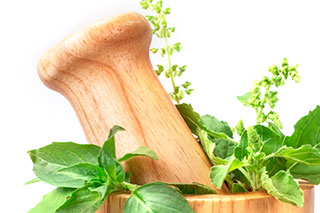Quantitative and qualitative analysis of pyrrolizidine alkaloids in liqueurs, elixirs and herbal juices
Uit: Fitoterapia vol. 136 2019, Mohammad Said Chmit et al.
Dr. Mei Wang | Pyrrolizidine alkaloids (PA’s) are nitrogen containing compounds that are found in various weeds, especially in the Asteraceae family. This type of plants is often unwanted by landowners because of its toxic effect for cattle and horses, and therefore it is considered a weed by many. This has been reported since 1903.
In human, disease associated with consumption of PA’s is known as pyrrolizidine alkaloidosis. PA’s have been reported to be hepatotoxic, mutagenic, and carcinogenic due to cross-linking of DNA. They are a significant group of natural toxins affecting livestock, wildlife, and humans. The view of the committee on Herbal Medicinal Products (HMPC) in the European Medicinal Agency (EMA) is that patient exposure to PA’s from HMPs should be as low possible and should not exceed a daily intake of 0.35 μg. However, for a limited transitional period an intake up to 1.0 μg per day can be accepted (EMA/HMPC/328782/2016). The analytical method the measure PA’s advised by HMPC is to use the SPE-LC-MS/MS method as published by BfR (Federal Institute for Risk Assessment: BfR-PA-Tea-2.0/2014).
According to the structure of the necine base, PA’s may be classified into four groups: retronecine-, heliotridine-, otonecine- and platynecine-types. Only the group of PAs which structurally are 1,2-unsaturated are toxic, while the PA’s without this structural feature are considered non-toxic.
This article entitled Quantitative and qualitative analysis of pyrrolizidine alkaloids in liqueurs, elixirs and herbal juices by Mohammad Said Chmit et al., in Fitoterapia vol. 136, July 2019 explores an analytical method to conduct quantitative and qualitative analysis of PA’s in various herbal based products. The results showed that 9 out of 38 liqueurs were PA-positive (24%). The total amount of PA’s ranged from non-detectable to 9.5 μg/kg. Seven out of ten elixirs were PA-positive (70%) with a maximum PA-content of 3121 μg/kg. Four out of six plant juices were PA-positive (67%) with an average of 4.4 μg/kg (PA-positive samples only). Some of the products have reached high levels of PA’s that are much higher than the limits given by EMA. However, the method the authors used in this investigation could not measure Otonectine-type PA which is also toxic according to the list of EMA (28 PA’s). This may imply that samples tested in this study may have even higher PA’s.
The important message from this article is that all consumers and herbal medicine practitioners should be very cautious to use the products based on herbal materials.







